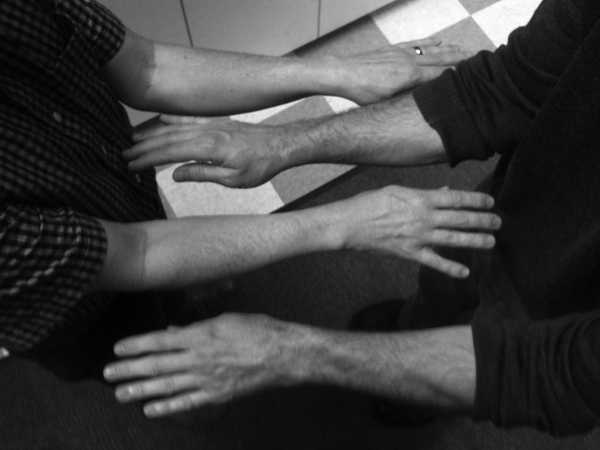
Bai Sao: Wing Chun’s Taproot
July 30, 2012
Wing Chun is not a style. It is a System of Principles that can enhance any art.
Wang Kiu
The title of this post is a quote for Wang Kiu, a student of Ip Man’s and Herbert Maier’s teacher.
Maier’s book Bai Sao: Wing Chun’s Taproot is not an easy read. In fact, although I bought it back in 2007, I only finished it this weekend. I’m afraid its pretty dry and academic.
But at its heart, it has some very valuable ideas which I think deserve to be heard.
This is the only place I have ever heard about “BaiSao.” Maier says it is a “little exercise” which his teacher Wang Kiu called a “demonstration hand.” The book was worth its price just for the insight or new perspective of this simple demo.
The hands are placed like so:
As Wang Kiu said, “I have two hands, you have two hands. One hand is outside, one hand is inside. Where else will you find so many options?”
This image stuck with me and I have used it with students and junior classmates ever since. It is really reductive. You can look at this image and understand how simple it all really is – even if you throw in three dimensions (above and below) there are not that many combinations.
If each person takes their outside hand and does a fook sao on the inside hand of the other person, you are practically in Chi Sao position – just rotate one arm up into Bong Sao.
The other excellent idea I heard in this book has also been drilled into me by my teacher. Wing Chun is a set of principles, not a martial art. The principles can enhance any art.
This is why my Sifu says that when you see Boxers or MMA fighters hit the head, in a way, that is Wing Chun. A basic principle of Wing Chun is that the best way to end a fight is to “attack the General.” Hit the head.
The people who developed Wing Chun drew up a list of principles and concepts that worked best most of the time, then they probably cherry-picked techniques from a number of pre-existing arts (White Crane and Snake Fist and combat Tai Chi?) to manifest these principles into the world.
Use two handed actions. Attack and defend simultaneously. Keep your hands on top. Chain your attacks. Hit the head. Use the ground for power. Create angles by turning.
Baier says Wang Kiu called them “KunKut” or Fist Principles.
It is a common idea in Wing Chun circles that Chi Sao is a testing ground where training partners present one another with puzzles, in the form of attacks/traps/covers.
I cover this hand and hit with that hand and your other hand is too far away – what do you do? This is posing a “Wing Chun question.” You are supposed to come up with a Wing Chun answer, which is based on the Principles.
Baier makes a good point, that another factor in this puzzle game is time. It helps to give “the other too little time to solve the puzzle.”
This is a crucial aspect of my current point in training – the timing. I need to create problems for my partner which he does not have the time to solve before I hit him again (give him another problem). I need to learn to be half a beat ahead of his timing.
This little book is, like so much of martial arts, a little dry but worth considering. Dr. Maier has also apparently taken some of these concepts and used them to create a company teaching problem-solving for business called TacticCog .
*Note: 3/2022 – looks like this book is Out of Print.
